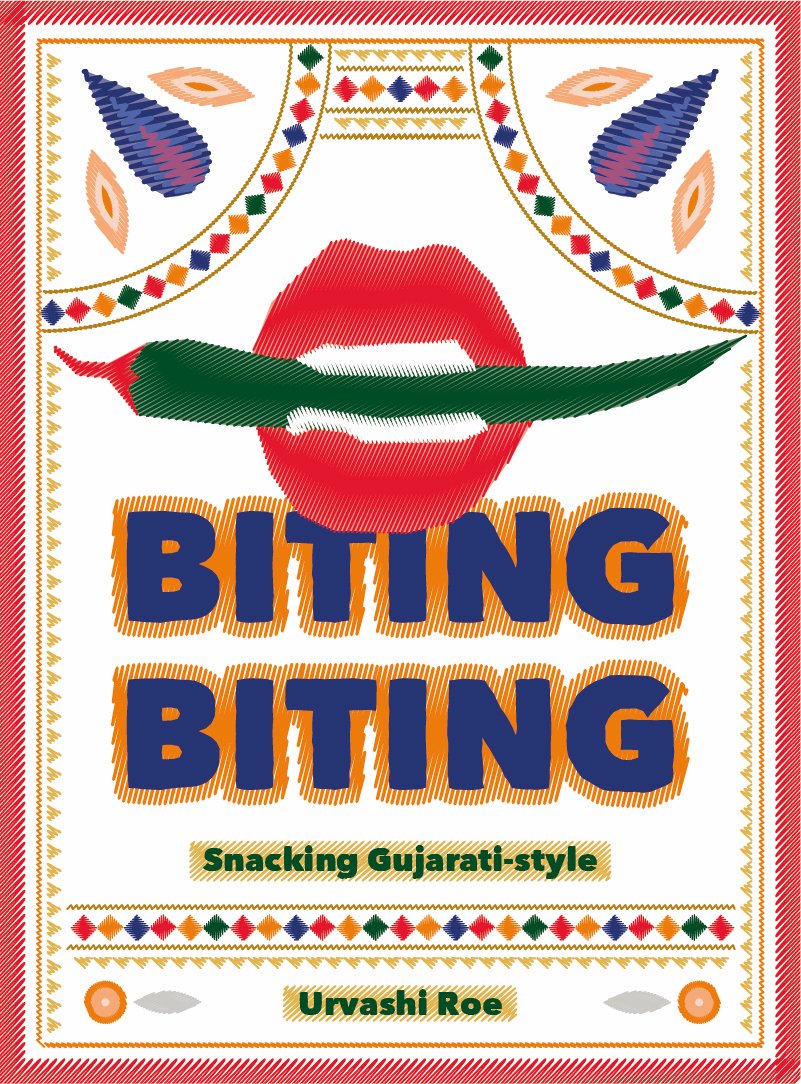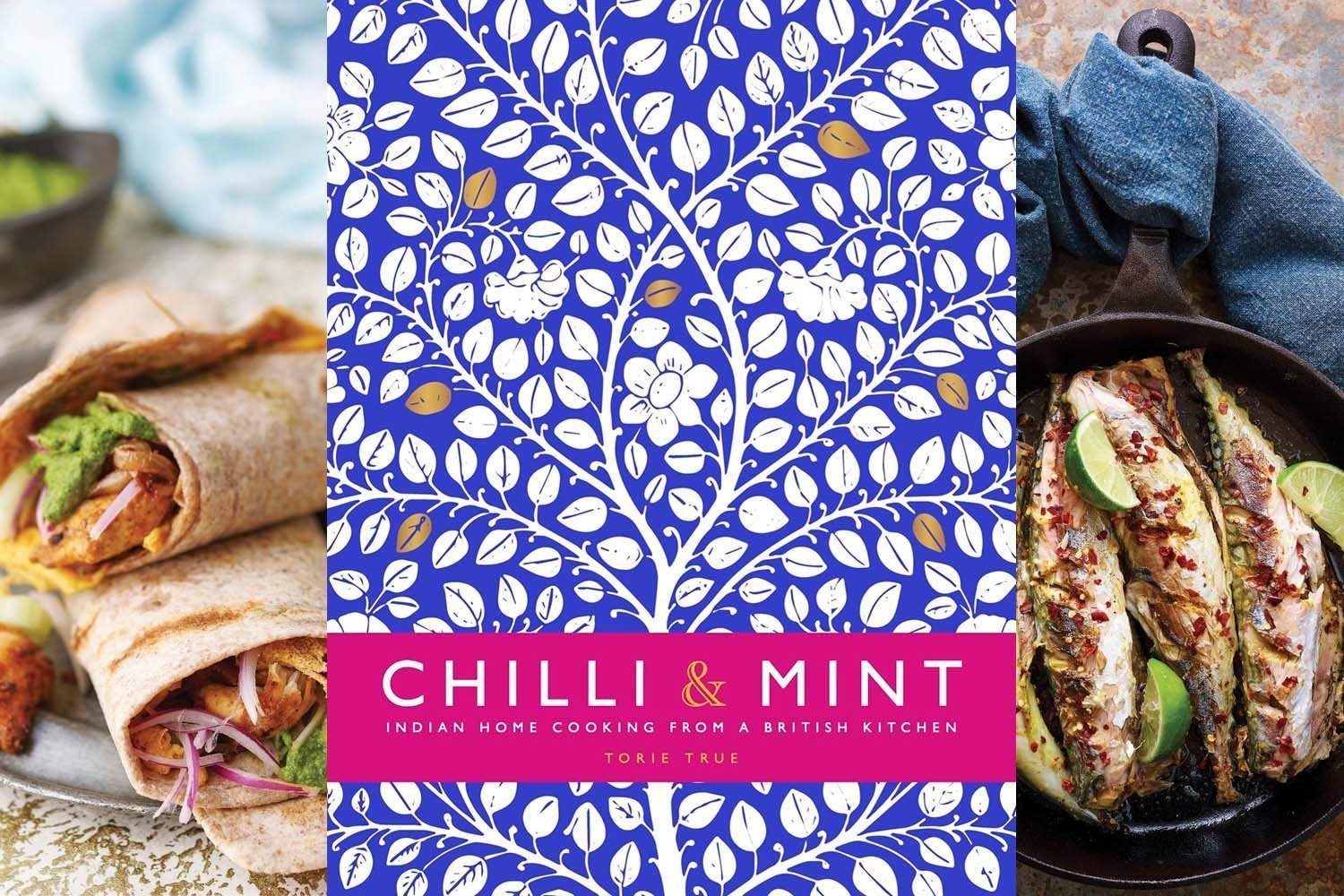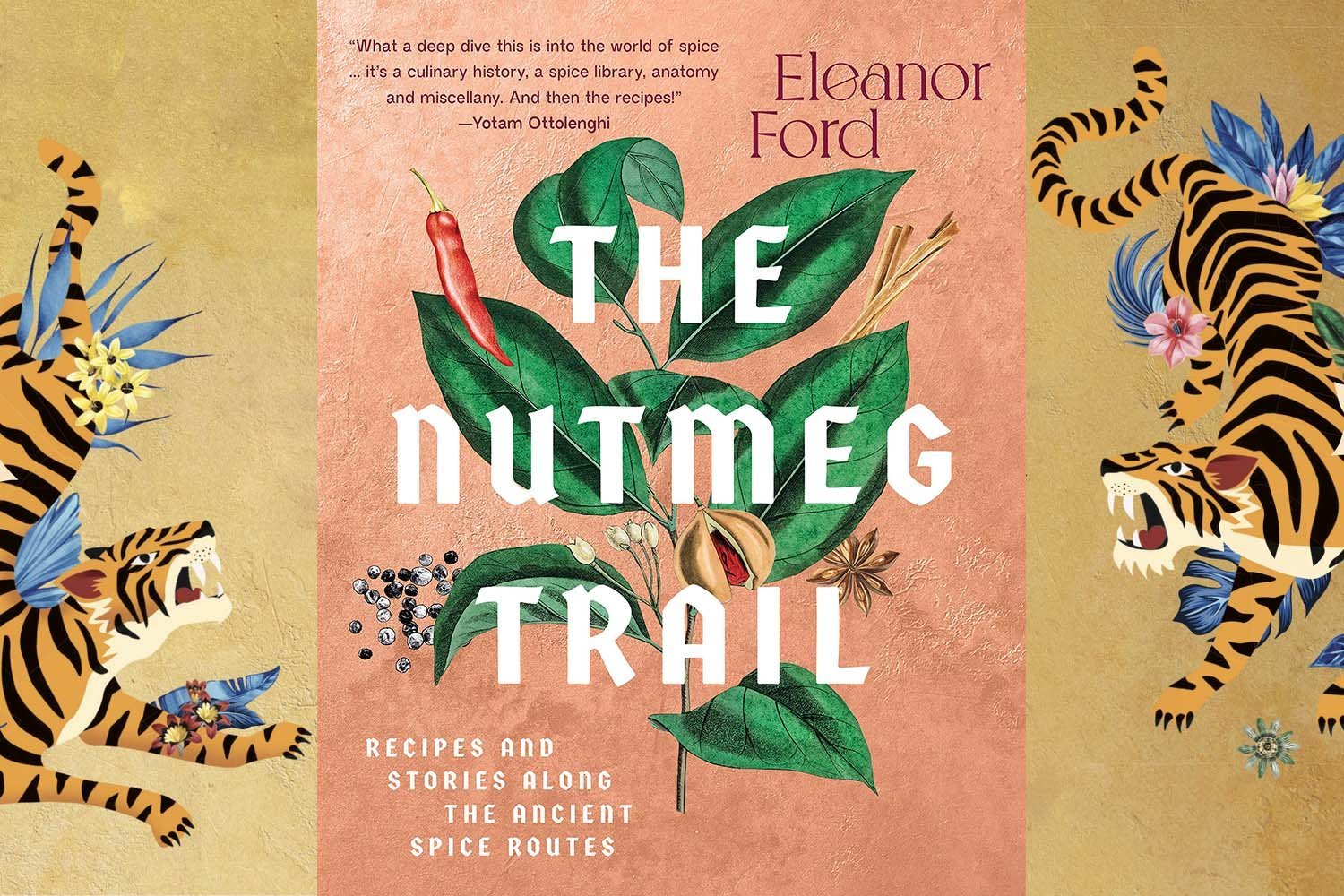Advertisement
Just Published: Biting Biting
31 August 2022 · Behind the Cookbook
“Snacks come in very handy in a large family like ours because people are always visiting, and it is customary to offer refreshments.”
Brand new to ckbk’s virtual shelves is Biting Biting: Snacking Gujarati-style, by London-based food writer Urvashi Roe. Published on September 1, the book is a celebration of home-style vegetarian and vegan snacks – beer snacks, salty snacks, sweet nibbles… These small eats are typical of the things that Roe’s family feast on when they get together – and especially if guests are involved.
The book’s title comes from her family’s name for their custom, which in turn is based on the Gujarati farsan snacking tradition. Urvashi’s family roots lie in Gujarat in India and she was born and grew up in Tanzania in East Africa, where she lived until she moved to Britain as a youngster.
The food and cooking of the Asian community living in Kenya, Uganda, and Tanzania evolved and changed to reflect the ingredients that were available, incorporating the likes of sweetcorn, cassava, and millet and forging a uniquely East African-Asian cuisine – one that has now taken root in the UK, again adapting the ingredients and cooking styles to fit circumstances.
Small these snacks may be, but they are packed with family memories, and Roe tells her family’s history, from Gujarat to East Africa to Britain, with honesty and wit – and, of course, plenty of food.
Biting Biting is a celebration of her family customs and, more broadly, the food of the Gujarati diaspora.
By Urvashi Roe
Photographs: Matt Inwood
The idea behind this cookbook came from a conversation between my husband and my mum. She had come to stay with us for a few days, and that means a kitchen takeover. The food, obviously, was wonderful but what she and my husband were arguing over discussing was leftovers.
We have a very small under-the-counter fridge, and it was full of little pots and bowls and bags of food. A few mouthfuls of this and a couple of ladles of that. My husband was complaining because it was all taking up so much space. Who would eat these tiny portions, he argued, and were they really worth saving?
He should have known better. My mother was aghast.
“Hay-re maaaa,” she exclaimed (that roughly translates to ‘Mamma mia’ if you are Italian or ‘Oh, my days’ if you come from my part of London). This was accompanied with a very sharp stare.
For a minute I thought she was going to clip him around the ear as this is the punishment I would have gotten for the same remarks. Then I remembered that, at 4ft nothing, she’d need to get on a kitchen stool to reach my husbandm, who is well over 6ft tall.
The reason she was so appalled was because we waste nothing in a Gujarati household. For my mother, it’s common practice to re-use even the smallest leftovers, transforming them into a different dish for another day’s meal or snack. Usually the latter.
Snacks come in very handy in a large family like ours because people are always visiting, and it is customary to offer refreshments. It could be a full-scale meal, but if someone is just popping over for a natter then it is usually katak batak. This is slang for small bites, snacks, pre-food, a little something or other.
Katak means ‘a small piece’ and batak means ‘bite.’ It sometimes gets shortened to kut-but with the verb ‘do’. So, ‘Chalo katak batak kare’ literally means ‘let’s do small bites.’
In my family, we say biting biting. Sometimes shortened to biting with the ‘i’ drawn out a little. Biiiting.
A cross-cultural conversation
I wanted to capture the essence of this conversation between the two cultures and our Gujarati ethos of ‘no waste’ in this book. I do think it’s a bit of a mindset to be thinking about tomorrow’s snacks today, but it really works to minimize the amount of food you throw away.
This mindset, coupled with a well-stocked store cupboard, some key spices, pickles, or chutneys in the fridge and veg in the freezer gives everything you need to always ensure snacks are at hand – quickly. This is important because family often arrive unannounced or give you a maximum of an hour’s notice. If Dad is driving, it could possibly be longer, but I never count on it.
The book includes chapters for beer snacks, bitings from shaak (curries) and dhal, sweet bitings and – my favourite – drinks to go with snacks.
One of our favourite beer snacks is Masala Papad. You can buy packets of papad (poppadoms) quite easily now and they are a great item for your store-cupboard. I’ve offered some suggestions for toppings in the book, but you can get really creative. You can also use the toppings as dips if you prefer.
A snacking primer
In Gujarati we say shaak rather than curry. In this chapter I have given some base recipes we commonly cook as meals and then often use to make bitings. Take, for example, Bateta Nu Shaak. It’s a wondrous, filling potato curry served with rice and Rotli but the following day it can become the most epic breakfast spooned over a thick slice of buttered sourdough, topped with a fried egg, some green chilli and coriander chutney, and chives from the garden.
Or it could be stuffed into filo pastry triangles and quickly fried into samosas.
Or it could be tossed with some tinned chickpeas, dolloped onto a serving plate, topped with chopped tomatoes, onions, and pomegranates, then drizzled with yoghurt and tamarind chutney.
Any rice leftover can be turned into Vagharela Bhaath – tossed in spices, stir-fried with onions, garlic, corn from the freezer and served as a side to grilled halloumi, salmon or chicken skewers.
Rotli is a flatbread found daily on a Gujarati dining table. We all have our own way of making it. For me it is a very special recipe because my cousin Daksha taught me. I was about 7. I remember standing on an upturned bucket next to her in front of the stove. She taught me to look for the bubbles that appear as the flatbread cooks on the first side, then to carefully flip it and press it to encourage it to fluff up, and then finally to flip it over one more time before smothering it in ghee.
As a reward for doing a good job I would get one with extra ghee and jaggery all rolled up to eat before dinner. It is wonderful freshly made, but stale rotli is awesome tossed into a thick, spicy yoghurt and chickpea-flour gravy – a wonderful soup my eldest craves when she’s home from university.
Gujaratis have a very sweet tooth and our family favorite is Millionaire’s Burfi. It is our family’s variation of a classic cardamom version – a creamy fudge topped with chocolate and caramel. When my girls were toddlers, we also loved topping it with brightly coloured sprinkles.
I hope the book will appeal to folks who are new to Indian cooking because Gujarati food is really very simple. Of all the regions in India, I think we use the least complex variations of spices. Equally, I hope experienced creators of Indian food will want to try food from a less-familiar region of India, perhaps a dish that we are renowned for, such as Dhokra, a lightly spiced, steamed semolina cake, or rice flour dumplings called Kichee.

Urvashi’s family-favorite Millionaire’s Burfi is a variation on the classic version made with cardamom.
I’ve provided my go-to combinations for the base recipes and tried not to be too prescriptive about this. Mostly the recipes are Gujarati, but every now and then you will find one that isn’t because it’s a favorite in our house or because I’ve been inspired by my travels around the world to adapt a dish I have grown up with.
Finally, in addition to the theme of snacks and sustainability, there is also an underlying theme of innovation in the book. My British husband will often experiment with vegetables I have never eaten growing up or that he’s growing on our allotment, such as parsnips, celeriac, and swede.
So, I am really looking forward to seeing what readers come up around the world with so I can expand my own repertoire of Biting Biting.
Try some of the most popular recipes from Biting Biting.
Sign up for ckbk's weekly email newsletter
Related posts
Behind the Cookbook
Virsa: keeping family traditions alive and helping the local community.
Behind the Cookbook
The story behind the creation of Chilli & Mint by Torie True.
Behind the Cookbook
Eleanor Ford gives a behind-the-scenes look at the making of The Nutmeg Trail.
Advertisement







